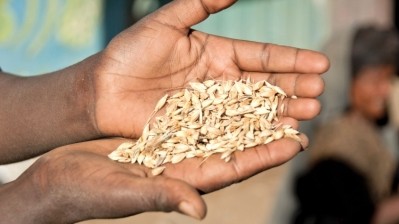South Asia Radius
Food Security Act to be in place by March 2016 despite delays

Ramvilas Paswan, the food minister, told senior officials of state food departments that 22 states had already implemented the law, while a further 14 were in the process of doing so.
The law makes it mandatory for state governments to make their public distribution systems digital. On doing so, they would become eligible to receive cheap grains under the Act.
This stipulation will allow two-thirds of India’s population to claim 5kg of subsidised foodgrain per person every month at Rs1-3 (US$0.015-0.045) per kg.
However, the process digitisation has stuttered since the Act was passed by parliament in 2013, and the deadline for its implementation has been forced to be extended three times.
"Except for Tamil Nadu, all other states have said they will implement the food law by the end of March 2016," Paswan said.
An official of the southern state said would only be able to implement the law in July 2016, as it was in the process of implementing a separate, universal public distribution system.
Mis-stating sodium content is commonplace, claims researcher
The level of sodium stated on a label is likely to be lower than the actual content when analysed in a lab, a researcher has claimed.
“Manufacturing companies are not displaying the analysed values of sodium, potassium or any other ingredients like protein or fibre,” Suneeta S. Chandorkar, of MS University, Vadodara, said.
“They simply put the calculated values of such ingredients, which misleads consumers.”
Chandorkar, who analysed 154 popular branded food products for their nutritional veracity, said that the analysed values were broadly higher than the reported ones.
“We are supposed to consume about 5g of sodium per day. However, we end up consuming anywhere between 8.5 grams to 10 grams per day, which is definitely on the higher side,” Dr Chandorkar said.
She added that some food manufacturers also do not reveal the source of the sodium in the ingredient list.
“There are numerous food products that are made with baking powder, black salt and other alternate sources. Food labels do not display the exact amount of salt that has gone into manufacturing products that are made up of such sources. This is keeping the customers in the dark. We have approached with FSSAI with the issue,” Dr Chandorkar said.
According to the FSSAI, India’s food regulator, manufacturers must provide information on ingredients, allergens, colours and flavours, and nutrition content on the nutrition fact panel.
Dr Chandorkar’s study found that the analysed sodium content was found to be higher than the reported values across a range of products, including cereal, baby foods, pasta, juices, jam, butter and cheese, and spreads and dips.
Industry growth continues at 11% per year
The overall Indian food industry is expected to be worth US$65.4bn by 2018, a research report has estimated.
This represents 11% annual growth, the study by IIM-Calcutta and the Academic Foundation said.
"Food and grocery constitute a substantial part of India's consumption accounting for around 31% of the consumption basket,” it said, adding that food is also the largest retail segment, which itself was valued at US$490bn in 2013.
The share of modern retail is expected to rise to 24% of the overall retail market, from the current 8%, the authors predict.
The report also suggests that India may have benefitted from the presence of foreign businesses in the food supply chain.
Record chilli prices follow difficult growing conditions
Indian chilli prices have reached record highs, with prices in October up by 104% on the year due to tight supplies and rising demand.
According to commodities analyst Mintec, chilli production is expected to fall by 30-50% in major growing regions in India following a severe June drought during the transplanting stages. Wet weather conditions in August subsequently resulted in the onset of the curly leaf virus.
While chilli production levels for the 2015/16 season between December and April are not yet confirmed, the total planted area is estimated to have fallen by 14% compared to last season.
Strong demand for exports, especially from China, has added pressure on prices. Exports of chilli from India in 2014/15 increased by 11% compared to the previous season, reaching 347,000 tonnes.
Leading chains among those found to be selling unsafe sweets in Delhi
Large chains were among the retailers found to be selling substandard sweets after a Delhi raid found that at least 16% of products it tested did not conform to regulations.
Some of the sweets tested by the capital’s food safety department were found to be unsafe, though most of those that failed the inspections did so either because of misbranding or for not declaring ingredients.
Bikaner Sweets in Badarpur, Trinagar and Mahipalpur, Shree Ram Sweet Centre in Vasant Kunj and Chandni Chowk’s Dhikka Ram Sweet Products were among the retailers found to be selling unsafe items, the inspectors said.
Of the 144 samples tested, seven were found to be unsafe, four had been found to be misbranded and 13 items had violated food safety regulations by not declaring the ingredients or having other discrepancies. The results of five sweet samples are still pending.

















